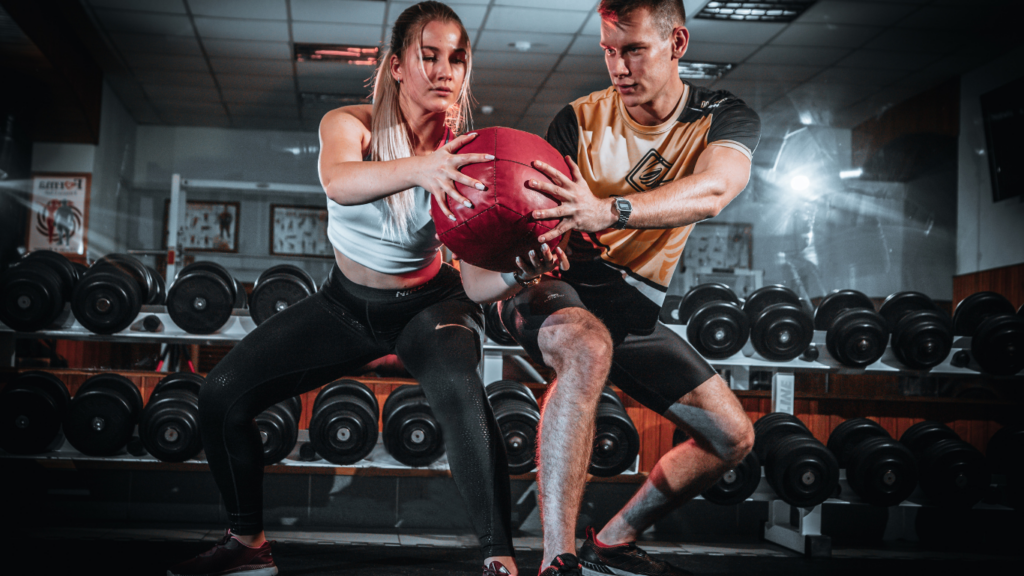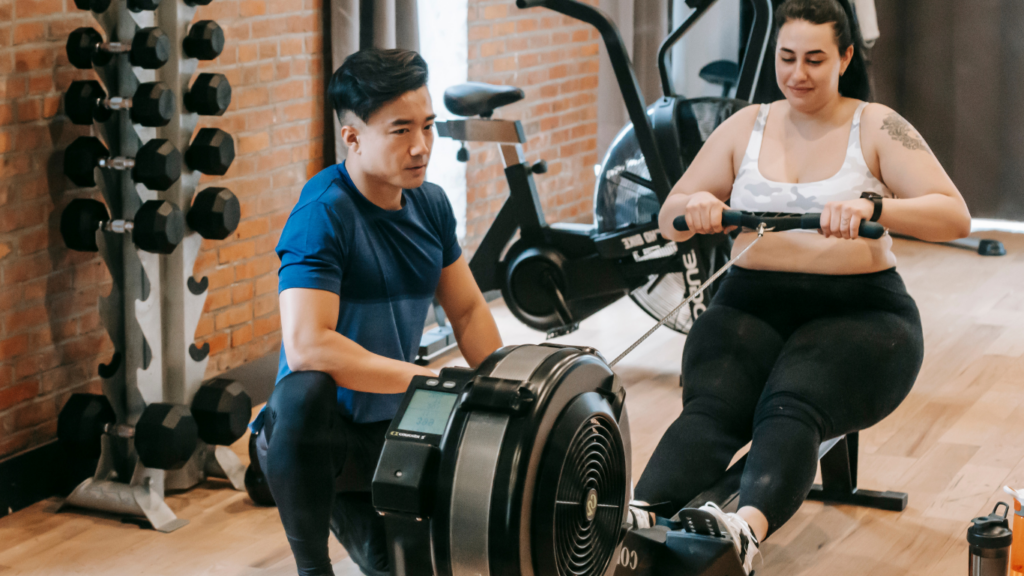Importance of Proper Workout Form
Proper workout form directly impacts safety and effectiveness in fitness routines. Understanding the mechanics of each exercise can prevent unnecessary strain and protect joints, reducing injury risks. Poor posture or misalignment during movements often leads to common injuries, such as muscle tears or joint problems.
Correct form also enhances performance by engaging the right muscle groups. When exercises are performed accurately, they can improve strength and flexibility more effectively than incorrect techniques. For example, maintaining a neutral spine in a squat activates core muscles, promoting stability and balance.
Many athletes and fitness enthusiasts experience setbacks due to improper form. These setbacks often derail progress and can lead to discouragement. By focusing on learning the correct technique, individuals can unlock their full potential during workouts and maintain consistent progress without setbacks.
Common Workout Injuries and Their Causes
Workout-related injuries occur frequently, often due to improper technique. Understanding these injuries and their causes is crucial for prevention.
Strains and Sprains
Strains, often affecting muscles, and sprains, typically involving ligaments, are common in workouts. They result from overstretching or overworking a body part. For example, a hamstring strain might occur during a sudden sprint or a heavy deadlift with improper alignment.
Tendonitis
Tendonitis, involving inflammation of tendons, frequently stems from repetitive motion with incorrect form. Activities like incorrect rowing or excessive bicep curls can lead to this condition when tendons endure undue stress.
Rotator Cuff Injuries
Injuries to the rotator cuff often result from poor shoulder alignment during overhead lifts or repetitive circular motion. Incorrect form and excessive strain on the shoulder can damage the rotator cuff, which is essential for stabilizing the shoulder joint.
Lower Back Pain
Lower back pain is frequently caused by poor lifting technique and incorrect posture during exercises like squats or deadlifts. Improper engagement of core muscles and arching of the back increase risk, leading to discomfort or injury.
Shin Splints
Shin splints often develop from overuse, especially with high-impact activities like running. Poor foot alignment and lack of proper support exacerbate the issue, putting intense strain on the shin bone.
Understanding these injuries’ causes highlights the importance of proper workout form. Correct technique protects the body, allowing for safe and effective workouts.
Key Principles of Good Form
Understanding key principles of good form is essential for preventing injuries during workouts. These principles ensure effective exercise execution and maximize results without compromising safety.
Alignment and Posture
Proper alignment and posture are cornerstones of good form. Keeping the spine neutral while engaging core muscles helps distribute weight evenly, reducing the risk of injury. For example, maintaining a straight back in exercises like squats and deadlifts protects the lower back and ensures correct load distribution. Aligning the neck with the spine and shoulders down also promotes stability and prevents strain.
Breathing Techniques
Efficient breathing techniques can enhance performance and stability. Exhaling during exertion phases, such as lifting weights, provides support by stabilizing the core and aiding in force application. Inhale during release phases to replenish oxygen and prepare for the next effort. Proper breathing helps maintain focus and reduces fatigue by optimizing oxygen flow.
Controlled Movements
Executing controlled movements enhances workout safety and effectiveness. Using slow and deliberate motions encourages muscle engagement, allowing for better control and minimizing injury risks. For instance, lowering weights gradually during a bench press increases muscle tension, leading to strength gains and protecting joints. Avoiding jerky or rushed movements further safeguards against strains and overuse injuries.
Tips for Specific Exercises

Proper workout form is crucial in preventing injuries and maximizing effectiveness. These tips help ensure safety and optimal results.
Lifting Weights Safely
Lifting weights with incorrect form often leads to injuries like strains or pulled muscles. To lift safely, I keep my back straight and engage my core to support my spine. Alignment of feet shoulder-width apart and keeping elbows close to my body while lifting maintains balance and control. Using controlled movements and gradually increasing weight reduces strain and increases strength.
Safe Running Form
Running form impacts performance and reduces injury risk. I maintain a straight posture with my head up and shoulders relaxed. Engaging my core helps stabilize my body, preventing undue stress on joints. My foot strikes the ground lightly, reducing impact, while keeping a consistent pace promotes endurance and efficiency.
Effective Stretching Practices
Stretching improves flexibility and prevents muscle injuries. I focus on dynamic stretches before workouts to increase blood flow and prepare muscles. Holding static stretches after exercising aids recovery by lengthening muscles. I stretch slowly, breathing deeply, to avoid overstretching and ensure a full range of motion.
Tools and Resources to Ensure Proper Form
Ensuring proper form during workouts not only boosts performance but also minimizes injury risks. I’ve found several tools and resources invaluable for mastering correct techniques:
- Mirrors: Observing my form in a mirror helps me maintain proper alignment. It provides immediate feedback on posture, allowing for real-time adjustments.
- Video Analysis: Recording sessions allows detailed form analysis. I review footage to spot deviations and pinpoint areas needing improvement. Apps like Coach’s Eye offer in-depth video assessments.
- Fitness Trackers: Devices such as wearables track my movements and give insights into posture and form. Many also provide feedback on gait and balance, crucial for running and dynamic exercises.
- Professional Guidance: Consultations with trainers or physical therapists ensure personalized advice. They can identify form issues and provide tailored exercises to correct them.
- Online Programs: Platforms like YouTube and fitness websites offer tutorials on form correction. I use them for visual demonstrations, ensuring each exercise aligns with recommended practices.
- Books and Guides: Reference materials provide detailed explanations and visual aids. Texts on biomechanics and exercise techniques expand my knowledge of proper form fundamentals.
- Virtual Classes: Real-time feedback during live sessions with coaches helps correct form immediately. This interaction enhances learning by offering specific corrections and tips.
By integrating these tools and resources, maintaining proper workout form becomes easier and more effective. It ensures a safe, rewarding fitness journey while enhancing my overall performance.


 Founder & Chief Editor
Elaine Griffindorry is the visionary founder and chief editor of Sprint Scoop News. With over 15 years of experience in sports journalism, Elaine has a passion for breaking news, in-depth sports analysis, and insightful coverage of the business side of sports. She launched Sprint Scoop News to offer a fresh perspective on the world of sports, combining cutting-edge reporting with expert commentary on health, fitness, and esports. Elaine’s leadership ensures the site remains a trusted source for sports fans and professionals alike.
Founder & Chief Editor
Elaine Griffindorry is the visionary founder and chief editor of Sprint Scoop News. With over 15 years of experience in sports journalism, Elaine has a passion for breaking news, in-depth sports analysis, and insightful coverage of the business side of sports. She launched Sprint Scoop News to offer a fresh perspective on the world of sports, combining cutting-edge reporting with expert commentary on health, fitness, and esports. Elaine’s leadership ensures the site remains a trusted source for sports fans and professionals alike.
